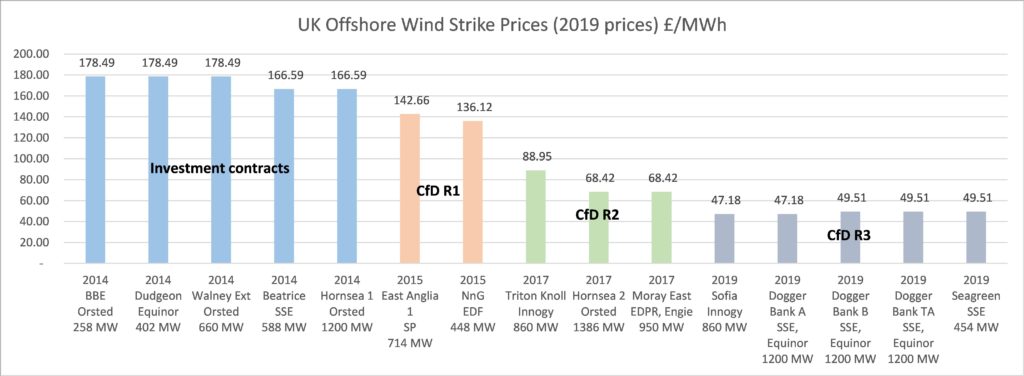Levelised cost of energy (LCOE) is a term used a lot by politicians, the media, industries, and academics when discussing energy mixes or policies. But what is it? And why do we need to be aware of its shortcomings?
Here’s what you need to know: the LCOE can be thought of as the average minimum price at which the electricity generated by the asset is required to be sold for, to offset the total costs of production over its lifetime, and provide an acceptable investment return (at Orbital we refer to LCOE excluding investment return as “Raw LCOE”). The higher the costs and lower the output, the higher the LCOE and the higher the power price required to generate an acceptable investment return.
LCOE = NPV of Total Costs over project lifetime
NPV of electrical energy produced over project lifetime
Higher capital costs and lower yields, or production output, are features of less mature technologies that have not yet benefited from significant periods of learning, no purchasing economies of scale and reduced access to lower-cost financing. This is why previous UK energy policies such as Renewable Obligation Certificates (ROC’s), or Contracts for Difference (CfD) auctions with de minimis limits, have recognised that higher power prices must be offered to support projects using earlier stage technologies and help facilitate the technology’s journey “down the cost curve”.
The reductions in auction price achieved in offshore wind are regularly cited by the Department for Business, Energy and Industrial Strategy (BEIS) as evidence of the effectiveness of the UK CfD auctions to date, resulting in reduced costs across the market and ultimately for the UK consumer.
At present, Orbital is targeting an LCOE for its first 2MW O2 turbine of under £200 / MWh. As shown in Figure 1 below, this compares closely to government investment contracts supporting over 3,000 MW (3 GW) of installed offshore wind capacity in UK waters which benefits from a power price, in today’s money, of between £165 – £180 /MWh.
It is now time for the UK government to replicate this low-risk support (the generator only receives the enhanced power price where there is the delivery of low carbon energy, and a developer will only be able to finance future projects if cost reductions can be delivered) to the next wave of emerging low carbon technologies, including tidal, and the jobs that it will create across construction, installation, O&M and export activities.

Figure 1: UK Offshore wind prices (2019 money) across recent auctions
Tidal energy costs are forecast to come down quicker over a smaller capacity than with fixed bottom offshore wind, meaning that overall, the market support/investment program should cost less. In addition, the UK tidal sector is currently well served by a large domestic supply chain which will create many more direct and indirect jobs, as captured in the 2019 ORE Catapult tidal stream and wave energy cost reduction and industrial benefit report.

Figure 2: ORE Catapult tidal stream and wave energy cost reduction and industrial benefit report extract
A major shortcoming that is created by a singular focus on LCOE is that there is no assessment of wider socio-economic benefits, such as job creation from both a predominantly UK supply chain and local onsite service teams for through life O&M capability. LCOE also fails to capture, or value, the predictability of tidal power generation. Orbital’s technology harnesses the world’s tides to capture consistent and predictable energy to help better manage an integrated low carbon national electricity generation portfolio or complement production of hydrogen and other niche market areas, such as water desalination or data centres, where stable predictable, and not intermittent, energy sources are critical. There are simply no large unplanned gaps in energy production due to resource or fuel issues.
The predictability of tidal noted above also offers an immediate opportunity to further develop storage solutions to smooth the curve of tidal energy production and help create a continuous power generation profile. This, in turn, can better inform the development of larger utility-scale storage solutions that can be developed for larger scale, more intermittent, generation sources.
The low-cost entry point for the first commercial Orbital turbine clearly highlights that our floating tidal technology offers a truly unique and exciting opportunity to develop a new and competitive energy generation technology. One with a global market application, from a predictable and low carbon energy source which, unlike some previous power generation technologies, can be delivered from a largely UK manufacturing base and supply chain.




